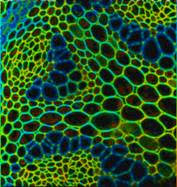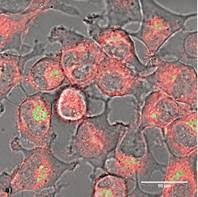Elemental Analysis
Elemental analysis in people has many applications. McMaster researchers Fiona McNeill and David Chettle use radiation techniques to develop devices for the in vivo measurement of toxic elements. Their goal is to develop devices that can be used to measure exposure to elements and investigate the possible health effects of exposure to toxins. McNeill and Chettle are interested in a wide variety of elements including fluorine, aluminum, gadolinium, lead, arsenic and chromium.
Mic Farquharson is primarily interested in analysis of ex vivo samples and studies methods of discriminating between healthy and diseased tissues. He has investigated a number of elements including zinc, copper and iron. He has been investigating elemental variations in breast and other cancers with the goal of developing a near real time tool to discriminate diseased and healthy tissues for surgical margin analysis. Elemental analysis research is supported by collaborations with Joanne O’Meara at the University of Guelph, David Fleming at Mount Allison University and James Gräfe and Ana Milic at Ryerson University.
The techniques developed for humans have also been applied in studies of art by McNeill. A small x-ray focusing device was originally studied for analysis of elements in skin, but was adapted into a 2-dimensional scanner for studies of a Van Gogh painting. This work was featured in a McMaster Museum of Art exhibition The Unvarnished Truth: Exploring the Material History of Paintings.
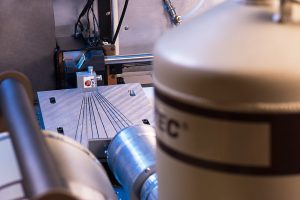
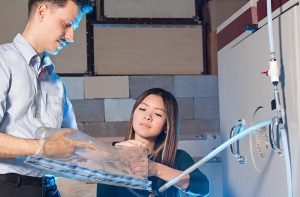
Detector Development
Soo Hyun Byun develops new types of radiation detectors, chiefly radiation dosimeters for applications in the nuclear industry, space and medicine. Much of his research is based on gas-filled detectors known as Gas Electron Multipler (GEM) and Thick Gas Electron Multiplier (THGEM) detectors. He has found a way to make these detectors very efficient allowing their application in nuclear industry dosimetry where dose rates can be quite low. In addition, he recently developed 2-dimensional neutron dosimetry technology.
He also studies other detector types, for example, combining scintillation and solid state detectors to allow for the development of detectors that can distinguish between ? and ? dose contributions. Byun works closely with the nuclear industry and has close collaborations with Jovica Atanackovic at Ontario Power Generation and Jeroen Thompson of Bruce Power.
In collaboration with Radgrad alumnus Andrei Hanu, who is currently at NASA, he is supporting the McMaster Neudose project which aims to launch radiation dosimetry equipment into orbit. The goal is to provide further information on radiation doses in space to assist in planned missions to Mars. More information on this student-led initiative can be found at the McMaster Neudose website.
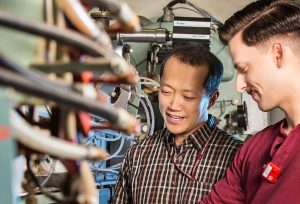
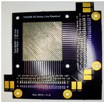

Radiation Biology/Radiation Ecology
A group of researchers is conducting research into the effects of radiation on animals and people. Carmel Mothersill and Colin Seymour study ‘non-targeted’ effects of radiation in both human and animal systems such as the radiation-induced bystander effect and genomic instability. They have demonstrated that cells not exposed to radiation respond when they receive a signal from irradiated cells. Recently they have shown that this signal is a multi-step process, in part chemical, in part a physical (UV/optical) signal.
They have also studied low dose effects in fish and have demonstrated that relative biological effects may be significantly lower than previously believed. Joanna Wilson, in collaboration with Doug Boreham (from the Northern Ontario School of Medicine) also studies low dose radiation effects. She is particularly interested in the effects of multiple stressors (which include radiation) on growth and hatching of Canadian indigenous fish species in the Great Lakes.
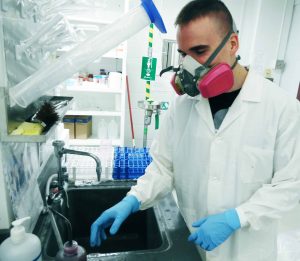
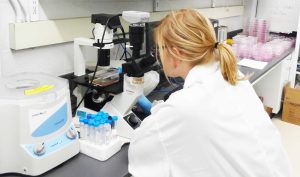
Imaging
Three Radgrad research groups conduct imaging research. Nick Bock is an Magnetic Resonance physicist who is interested in the brain. He conducts research on myelination with a recent focus on the effects of toxic metals on the brain. Mike Noseworthy is an imaging physicist whose research focuses on assessment of normal and diseased tissue microstructure and the ensuing modulation of tissue metabolism, using magnetic resonance imaging (MRI) and in vivo nuclear magnetic resonance (NMR) spectroscopy. Troy Farncombe is a clinical physicist based at the McMaster University Medical Centre with expertise in SPECT and PET imaging. He is particularly interested in the role of potential new detector types and signaling processing in SPECT imaging improvement.
Biophotonics
A number of researchers research biophotonics, the study of the interaction of light of a number of wavelengths with tissues. Biophotonics applications include photodynamic therapy for cancer treatment, diagnosis of disease in tissue and 3-d imaging applications in animal models. Quiyin Fang from the faculty of Engineering, and Tom Farrell, Joe Hayward and Kevin Diamond all perform biophotonics research including development on new tissue equivalent materials; measurement and testing of new systems and devices, and computer modeling of photon interactions with biological systems.
Radiation Therapy
Orest Ostapiak and Marcin Wierzbicki are clinical physicists at the Juravinski Cancer Centre who perform research that seeks to improve radiation therapy for cancer treatment. Their research interests include the clinical implementation of radiation therapy techniques such as Intensity Modulated Radiation Therapy (IMRT), Volumetric Modulated Arc Therapy (VMAT) and image registration optimization. Many linear accelerators are capable of acquiring 3-D images of the patient prior to delivering a fraction of radiation therapy and the images can reveal patient setup error and normal anatomical motion. Finding ways to modify treatment parameters in response to such changes could reduce variability in treatment quality across patients.
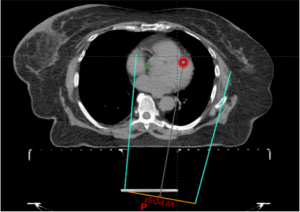
Learn more about the research facilities available to RadGrad supervisors and students, on our Research Facilities page.

